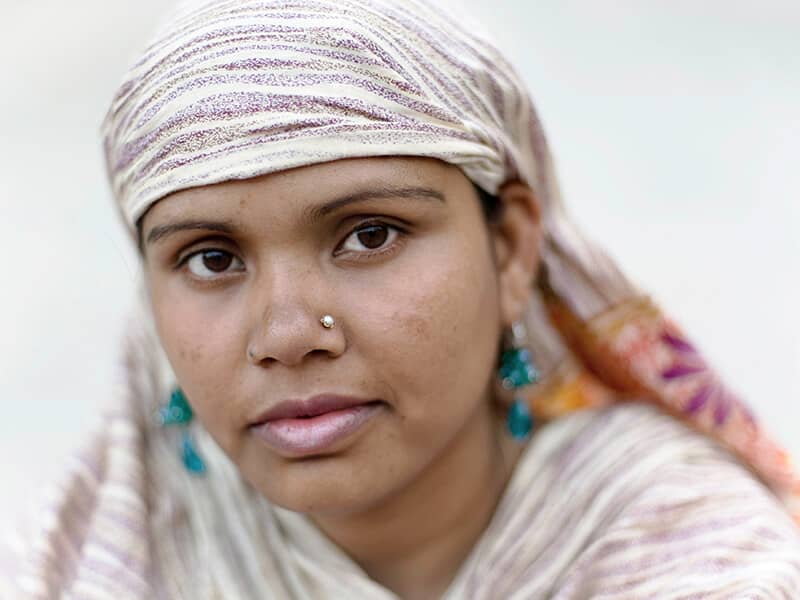Yet, Asma's family had lived in Pueblo, Colorado, for more than 20 years; they were well-known in the community and even belonged to the local country club.
For Asma Hasan, the Oklahoma City bombing brought home the paradox of privilege and persecution she and her family have faced--an oft-heard theme of the immigrant Muslim experience in America.
"With the Oklahoma City bombing, American Muslims came to the edge of a cliff and began looking over," Hasan writes, "and the bottom of that cliff is the treatment of Japanese-Americans during World War II, when they were held in internment camps, denied their rights as American citizens, and singled out as un-American."
Hasan is the author of "American Muslims: The New Generation" (Continuum Publishing/December 2000/$19.95 hardcover/180 pages). Informed more by Gloria Steinem and the MTV culture than by anything emanating from Tehran or the Taliban, Hasan valiantly tries to paint a contemporary and personal portrait of growing up Muslim in America.
Hasan--a self-described "American Muslim feminist cowgirl"--is the 25-year-old Colorado-raised daughter of immigrant physician parents from Pakistan. Hasan's is an American Muslim upbringing that may not be familiar to most readers: elite private schools and colleges, homes in affluent suburban neighborhoods, access to country clubs, Euro-vacations, and...Sundays at the Islamic center.
"Our fellow citizens think all Muslims are terrorists and women-oppressors," Hasan says, "yet Muslims know we are actually much better people than the stereotypes make us out to be."
Colored by the ivy-clad feminism she absorbed at Groton and Wellesley and the brash individualism she gleaned during her childhood in small-town Colorado, Hasan's portrait of Muslim America will surprise non-Muslim readers and may make some Muslim readers balk; for example, she doesn't believe in hijab (the veil) or segregation in prayer. Hers is definitely a liberal Islam--an Islam imbued with a feminist, freedom-seeking consciousness determined to integrate the allure of secular American pop culture with the rigor and demands of the ancient Abrahamic faith.
Hasan's book is groundbreaking--many of the book's topics have never before been discussed in an accessible book format outside academic circles, community forums, or family living rooms. There's no doubt Muslims need to do more of what Hasan has done: write, especially about and for themselves in unvarnished, open, and fresh ways. There simply aren't many titles in the Muslim self-exploration genre. A cursory search of books about Muslim America on Amazon.com turns up only a handful. By comparison, a search for "American Jews" could stock a whole bookstore.
With candid perspectives on everything from Hollywood stereotypes and electoral politics to hijab, gender segregation, Islamic feminism, courtship, and marriage, straight-shooting Hasan vividly charts--through many personal vignettes--the issues and challenges she faces as a young American Muslim woman.
Hasan is arguably at her best and most vivacious when she launches into her discussion of women's issues in Islam, especially those related to what seems to be on many twentysomething Muslim womens' minds: getting hooked up.
She describes at length the sometimes quixotic task of getting married as a young single Muslim woman pursuing a career, dealing with family pressure to get married but with family frowns on dating (and on premarital sex).
Hasan sees four possibilities for the future as far as Muslim courtship goes. She predicts that the prevailing "Don't ask, don't tell" attitude--where dating has become a de facto norm but not publicly accepted or acknowledged--will likely continue. "The second possibility is that American Muslims will change their attitudes toward dating," Hasan argues, "and come closer to most Americans' understanding of dating." This change might include an acceptance of dating and--gasp--premarital sex.
Hasan thinks those parents uncomfortable with this free-wheeling "Melrose Place" scenario may instead encourage their children into early marriages "as soon as their hormones and desires kick in." The final possibility in Hasan's scheme could be called the "Mormon" option: the creation of BYU-style universities and other environments "where members of the faith meet, date, and marry."
In fact, Hasan is on occasion guilty of indulging in the same generalizations about Muslim women that she purportedly rails against. In her chapter on hijab, she remarks that professional women who wear hijab tend to be "involved in academic or other insulated careers where they rarely encountered average Americans." More disingenuously--ignoring the many hijab-wearing women who are also activists on the frontlines--Hasan speculates: "It seems that the more activist a woman is in the American sense the less likely she is to wear hijab."
With American Muslims being as diverse as America itself, painting a cogent and cohesive portrait is no easy task. And while Hasan is an engaging writer on issues like gender and marriage, she sometimes falls short when trying to illuminate the whole canvas of American Muslims, especially with African American Muslims. In a way, she misses the forest for the trees with the book's inordinate and disproportionate attention to the historically heterodox Nation of Islam, led by Louis Farrakhan, while largely ignoring the much larger and significant saga of Imam WD Muhammad and the mainstream African American Muslim community. The American Muslim Council reported more than two million African American Muslims in their 1990 census, while the Africana Encyclopedia estimates the membership of the Nation of Islam to be only between 10,000 and 20,000.
The book would make a needed addition to middle, high school, and public libraries. It might also make an interesting gift for a friend who knows zilch or learned everything they know about Islam from CNN's Wolf Blitzer or the abysmal Sally Field flick "Not Without My Daughter." The book definitely gives voice to a feisty, effervescent Muslim perspective seldom heard or seen in the mainstream media. And it could spur some interesting discussions at Muslim family kitchen tables--especially between moms, dads, and a new generation raised with the carnal knowledge of Britney and Monica.

